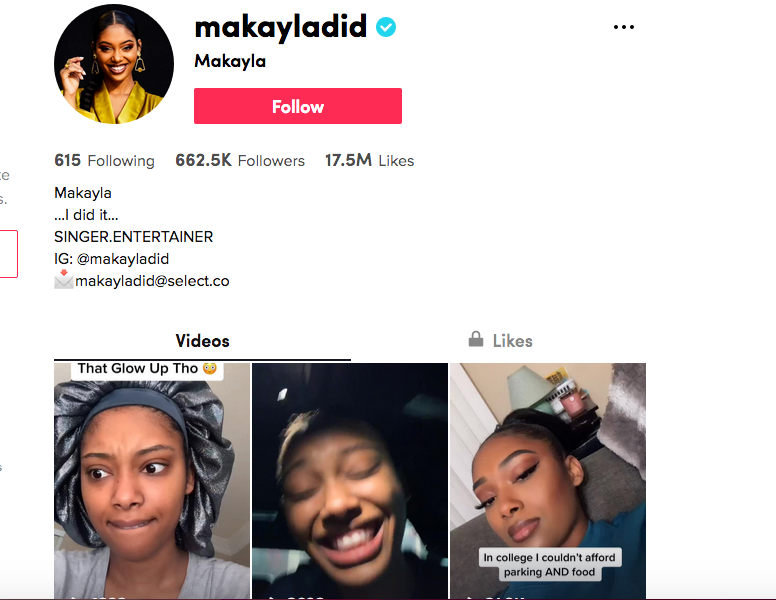Curator's Note
Original Sound- Makayla Account
Known as “Girl Don’t Do It” or “I Did It,” a popular TikTok trend uses an audio track with a feminine voice contemplating making a bad decision and ultimately going through with it. The creator of the audio, Makayla Did, is a Black woman, makeup artist, and musician with over 600 thousand followers on TikTok. Based on her interests and following, Did’s audio first became popular with what users call the beauty “side,” or niche, of TikTok, with users most commonly posting videos of themselves making big hair changes at home, like cutting their own bangs, dying their hair, or chopping off all their hair. However, the meme gained traction and expanded past this original community and onto other “sides” of the app, including crafting/home decor TikTok, pet TikTok, and political TikTok.
This popularity of “Girl Don’t Do It” demonstrates the flow of content on the app and how the affordances of the app so easily divorce content from its creators and original context. A popular user-produced audio like Did’s is not searchable in the app, either by the name of the audio or the creator. The only way, then, to access the audio is to search for it on an outside platform like Google, or come across it organically being used in another video, and bookmark it for later use. Additionally, rather than using Did’s original audio, users may imitate the trend with their own audio, spawning many different versions across the app.
The lack of avenues toward appropriate attribution becomes troubling in the context of recent work about digital blackface, or in the case of TikTok, digital blackvoice, a form of black minstrelsy online that often appropriates the images and language of black women specifically. While “Girl Don’t Do It” may not be the most egregious example of this type of misogynoir, Lauren Michele Jackson is clear to point out that “no digital behavior exists in a deracialized vacuum.” Surveying the top 50 results that use Did’s audio, the top five of which alone have been viewed over 28 million times, reveals that less than a third of these videos are created by people of color. However, the most extreme transformations that employ the audio, revealing cosmetic surgeries like rhinoplasties, are almost all women of color, demonstrating the demand to conform to white, Western ideals of beauty as another form of insidious racism present on beauty TikTok.

Add new comment